Human development started with the control of fire. Fire, along with storms and volcanic eruptions, is a major disturbance in a natural eco-system. Thanks to fire ecology we now know that in many forest eco-systems, such as the boreal pine forests, the Californian Chaparral forest or the African Savannah, that fire plays an important regulatory role.
Many plants and animal species have adapted themselves to forest fires. At times fire is even a requirement for them to be able to permanently survive (e.g. pine cones whose seeds are released only after extreme heat). Fire can also have negative effects, especially when it strikes mountain forests and damages its protection function. In such cases foresters are expected to take well timed silvicultural and technical measures in order to prevent follow on damage.
What chances of survival do trees have after a fire?
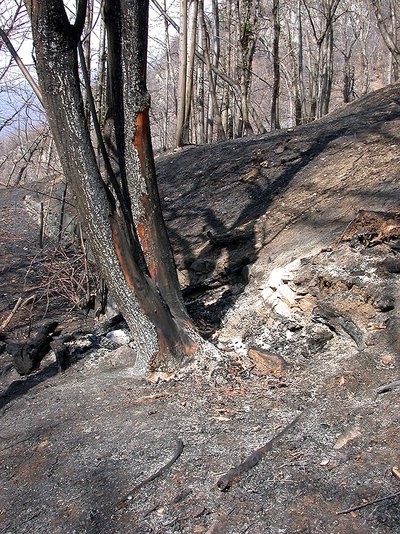
Fig. 2 - Most of the trees affected by the fire in Cugnasco looked like this. Photo: Marco Conedera (WSL)
How much a tree is weakened by fire depends on many factors: on the intensity of the fire (height of flames, intensity and duration of heat radiation), on the trees heat resistance capacity (insulating rough bark, protection due to neighbouring trees), on the regeneration capacity of damaged tissue (overgrowth of open wounds, the production of substitutive shoots) and on infestation by tree weakening parasites and insects.
In the United States there has been plenty of research into the reaction of trees after forest fires. Species specific criteria have been developed. These are used to estimate the survival chances of single trees depending on the injuries caused by the fire and to plan expedient silvicultural measures needed for the treatment of such stands. In Europe only isolated studies have been carried out on this subject, mainly in the Mediterranean area on pine species such as Pinus pinaster.
The EU Research Project "Fire Paradox", which started in 2006, permitted such observations to be carried out in deciduous forests. The Federal Research Institute WSL is closely observing three tree species; beech (Fagus sylvatica), oak (Quercus petraea and Q. robur) and the sweet chestnut (Castanea sativa). In selected forest fire areas in southern Switzerland it is examining the following three aspects:
- direct scorch marks as indicators of fire intensity (height of charring on trunks and the intensity of burn at the foot of the trunk);
- ensuing tree damage (the death and peeling off of bark, insect infestation, fungi infestation, defoliation, breaking off of crowns)
- the reaction of the tree (wound overgrowing, epicormic shoots in the crown, on the trunk and from the stool).
Using these parameters the state of health and the reaction ability were recorded over many years for every fire and every tree species.
The forest fire near Cugnasco
Between the 3rd and 4th April 2006, during a strong north föhn wind, 55 ha of forest burnt on the southern slope above Sasso Fenduto (Cugnasco, Tessin). This area, which extends from 450 m to 850 m above sea level and which according to the forest data base had never had a fire in the past 100 years, was stocked with the remains of a sweet chestnut forest mixed with common and sessile oaks. Higher up there was also a beech stand.
As the traces of fire on the trees and the white ash clearly show (Fig 2.) the combination of drought, wind, degree of slope (an average of 60%), and an accumulation of fire material increased the fire intensity. The bark of many trees (especially the beech trees) was split open by the heat. The rough bark of the oak trees - which usually protects them from fire - drew the flames upwards.
By July 2007 some trees had recovered but some had died (Fig.1). Such stands are valuable for research purposes, as very little is known about the development of central European forests after fire.
Ideal conditions for fungi
The weakening of large trees due to fire provides ideal conditions for a massive colonisation by various fungi. The following fungi appeared most numerously in the second year after the fire in the burn area near Cugnasco (see box).
- The milk white toothed polypore (Irpex lacteus) is considered a relatively rare species in central Europe, which usually only appears in Switzerland in the Tessin. On beech trees so many fruiting bodies appear after a fire that from a distance the trunk seems to be totally white (Fig.3). The fruiting bodies have irregular slashed pores with tooth like structures. The fungus appears most dominantly on trees which have been badly damaged by fire. It causes white rot which eventually leads to the trunk breaking off.
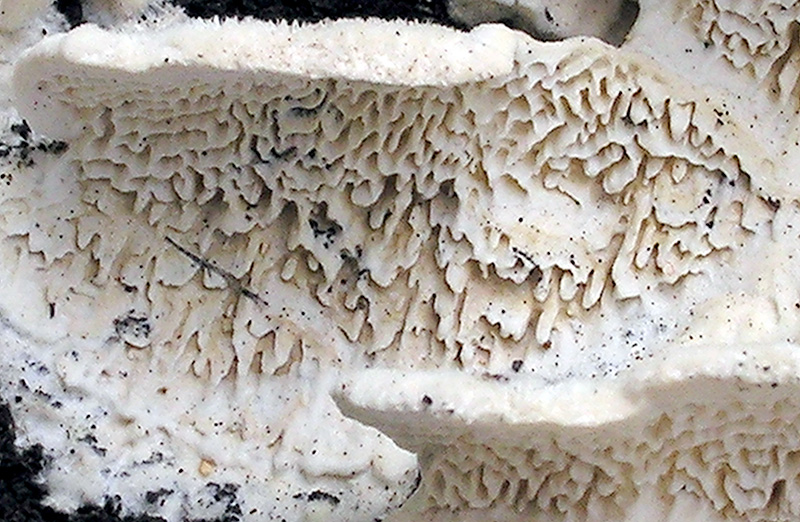
Fig. 3 - The milk white toothed polypore (Irpex lacteus), a typical white rot pathogen.
- The hairy curtain crust fungus (Stereum hirsutum) is one of the most common fungi world wide to be found on deciduous trees (especially oak, chestnut and beech). The fruiting bodies are yellowish in colour and have –like all Stereum species – a smooth spore producing layer on the underside of the cap. The surface of the cap has ragged hairs (Fig. 4). This species only colonises relatively fresh sapwood causing stripes of white rot. It could possibly kill weakened trees. After fires in deciduous forests this type of pioneer nearly always fruits. This species varies greatly; in the photograph groups of various coloured fruiting bodies can be observed. These belong to different mycelia. Fungal mycelia often colonise meter long areas.
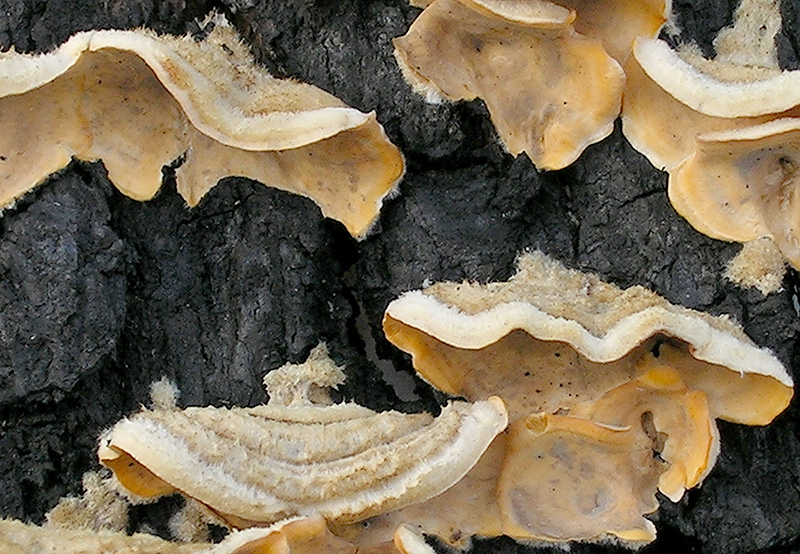
Fig. 4 - The hairy curtain crust fungus (Stereum hirsutum), a fungus found world wide on deciduous trees.
- The Stereum ochraceo-flavum (or S. rameale) was observed much less often than the hairy curtain crust fungus. It differs to the above by being grey in colouring and lacking a recognisable dark line beneath the cap surface in cross section.
- Schizophyllum commune, the common porecrust, is a unique fungus. Its shell shaped fruiting body, which can reach a size of up to 5 cm, is characterized by "lamellas" which are cracked at the edge. (Fig. 5). This characteristic can clearly be seen when the fungus is cut. The porecrust is a typical example of the "sunburn community", a species assemblage of fungi which often appear on tree trunks stressed by sunburn. This widespread white rot pathogen colonises various wood substrates, destroys silage bales and sometimes even infects humans who have weakened immune systems causing a dangerous illness. In a dried form the fruiting bodies can survive over many years.
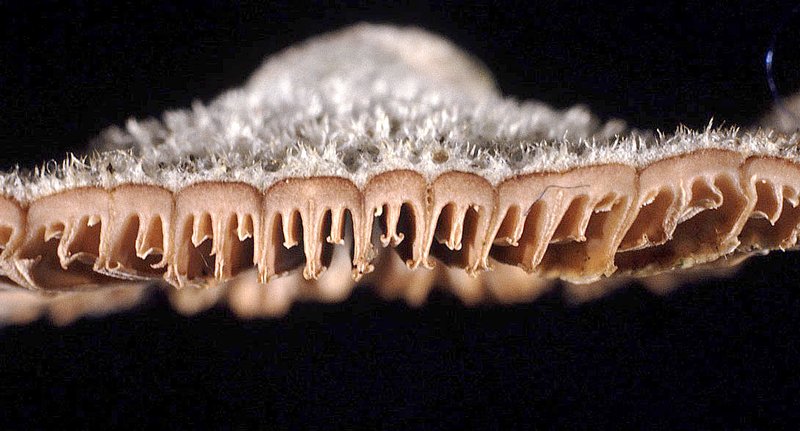
Fig. 5 - The common porecrust (Schizophyllum commune), a typical representative of the "sunburn community".
- The chestnut blight pathogen (Cryphonectria parasitica) fruits mainly on the sweet chestnut tree after forest fires and also occasionally on oak trees (Fig. 6). What is interesting is that this fungus is not only present in cankers but also in large areas of the normal bark. It is not known if it was previously present in the living bark or whether the substrate was newly infected after the fire. More specific research could provide information as to whether we are dealing with the aggressive or the harmless (hypovirulent) form of the fungus. If the latter is the case then forest fires could indirectly contribute to a biological control of the chestnut blight because the hypo- virulence is infectious.
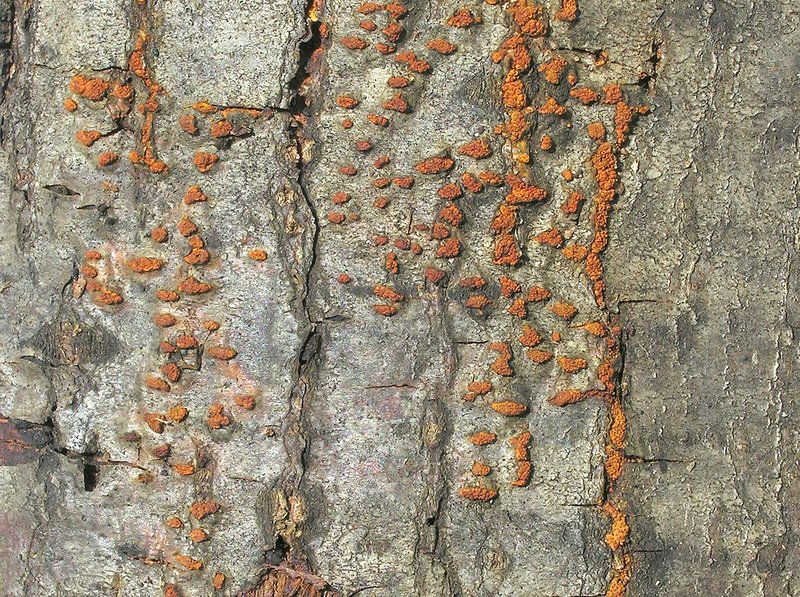
Fig. 6 - The sac fungus Cryphonectria parasitica, which is responsible for the development of chestnut bark blight.
- The genus Trichoderma includes many species of quick growing moulds which are difficult to differentiate. They are ecologically important as mycoparasites and for the production of antibiotics. They provide the basis for various biological compounds used in fighting plant diseases. Figure 7 shows an especially aggressive case of parasitism by Trichoderma sp. on chestnut blight The blight pathogen has died off in the area of infection and the mould has formed white mycelia and green spores.
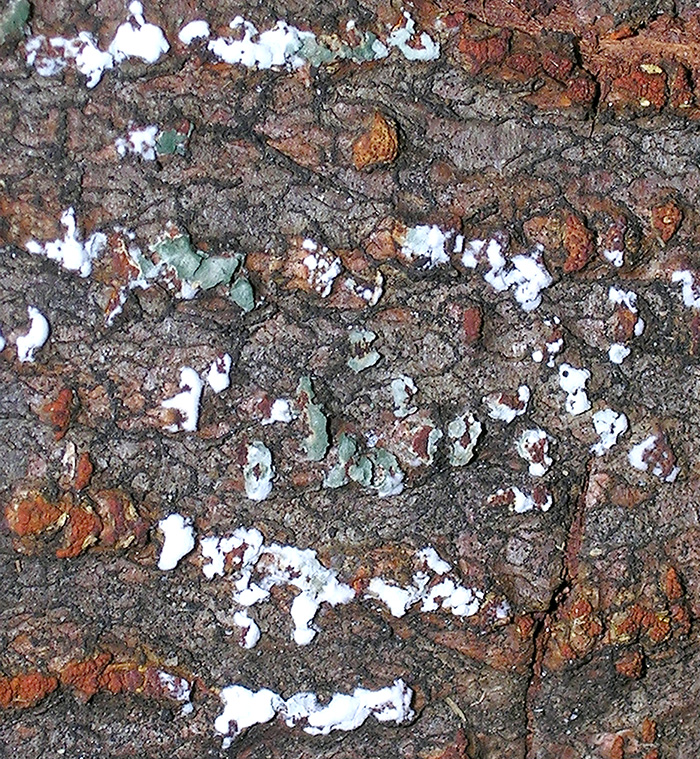
Fig. 7 - Infestation of Cyphonectriaparasitica caused by the Trichoderma sp. mould
- Crampballs or coal fungi (Daldinia species) are sac fungi (ascomycetes) which are especially adapted to forest fires. They can remain dormant for decades but appear most prominently after forest fires. It is assumed that they are spread by specialized insects. Their fruiting bodies are tuberous (stromata), in the extremities of which many tiny, round individual fruiting bodies develop (Fig. 8). In a cross section the stroma appears to be layered. All layers have developed during the same vegetation period. The layers develop due to abrupt changes in the direction of the hyphae, which stabilize the whole structure. The fruiting bodies store a lot of water, so that spores are able to develop even when there is a period of drought. In Europe there are at least 8 very similar species of Daldinia; an exact determination in this case was not possible, as the fungus was not ripe.
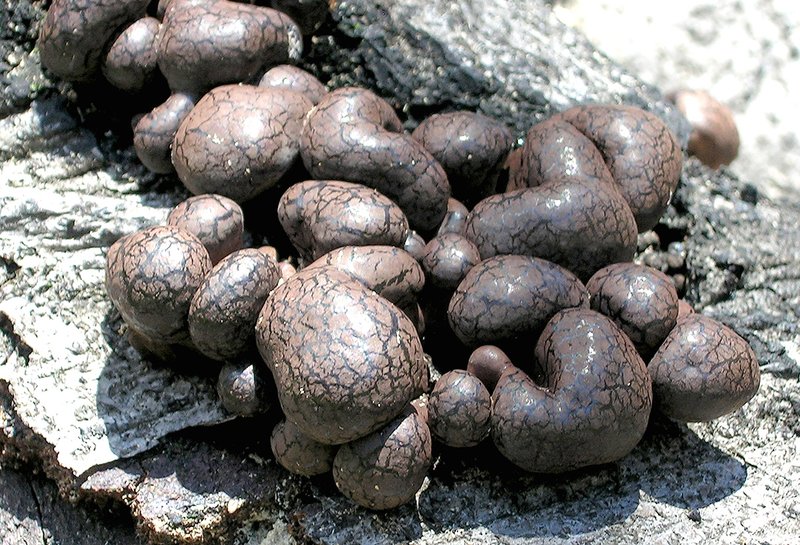
Fig. 8 - Crampballs (Daldinia sp.) on a beech tree
Photos of the fungi: Lara Lucini und Ottmar Holdenrieder
Final commentary
It is exciting to observe how fungal flora develops on damaged trees. What is astonishing is that we know very little about the effect that these fungi have on trees. Natural environments are difficult to reproduce in experiments. For instance, the effect fungi have on a tree depends on the size of the mycelia hidden within the tree. Also to be taken into consideration is that various fungi can have an affect on each other. That is why careful observations in natural environments are essential. They not only help predict future forest development, but they could also provide useful tips for nature conservation (occurrence of rare fungi species, colonisation of infected wood due to wood peckers, etc.).
Translation: Dawn Meister, Stallikon

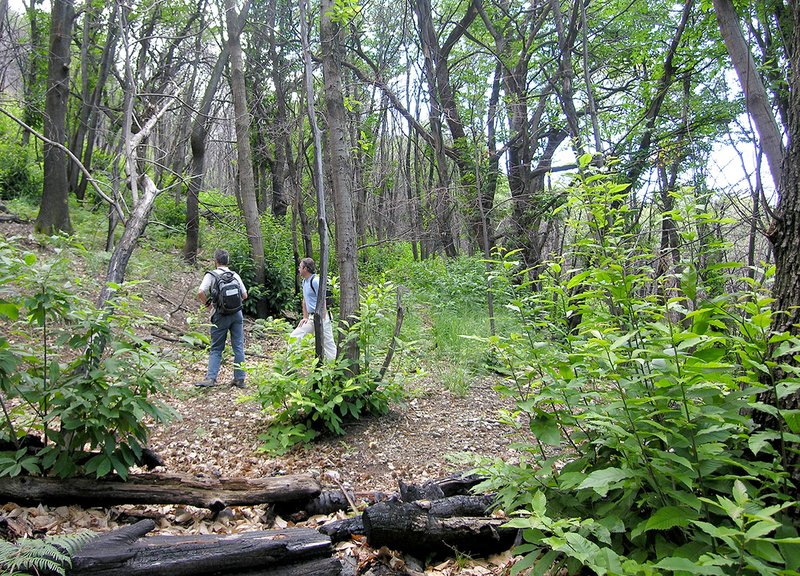
![[Translate to English:] [Translate to English:]](/assets/_processed_/0/b/csm_wsl_waldbrand_asche_a7ac1f3170.jpg)
![[Translate to English:] [Translate to English:]](/assets/_processed_/a/7/csm_fva_waldbrand_wb6_rauchverbot_9467686836.jpeg)
![[Translate to English:] [Translate to English:]](/assets/_processed_/3/2/csm_fva_waldbrand_wb2_823e18b47f.gif)
![[Translate to English:] [Translate to English:]](/assets/_processed_/f/a/csm_fva_waldbrand_wb4_3_waldbegang_c0d6a98eea.jpeg)
![[Translate to English:] [Translate to English:]](/assets/_processed_/b/7/csm_fva_waldbrand_wb5_schutzstreifen_adcd74cfd2.jpeg)